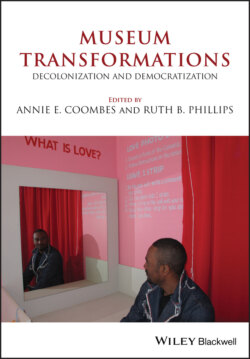Читать книгу Museum Transformations - Группа авторов - Страница 39
Contemplation versus information
ОглавлениеThe debates often revolved around purported opposites: emotion versus elucidation, contemplation versus information, remembrance versus the provision of information. While these discussions were certainly justified, they often became strangely abstract, even ideological. From the outset, they appeared to focus on various ascriptions guided by diverging expectations that did not do justice to the complex process of conveying historical knowledge in an exhibition. The fates of individual victims of the Holocaust were supposed to be the focus of attention. Only in the course of deciding on the texts and images, and as a result of serious attempts to find a compromise between the diverging ideas, did the antagonistic parties arrive at reasonable solutions.
The debate surrounding the glass showcases on the floor and their planned inscription with the original testimonies of victims of the Holocaust is symptomatic of this. Resistance toward this concept in the first room was considerable among historians (Baumann 2011, 172–177). Some feared that it would lead to a strong emotionalization, and preferred to list the victims’ names instead of displaying subjective quotes. Others feared that the victims’ testimonies would literally be trampled underfoot. Some even thought that the idea that visitors could only read the inscriptions with their heads bowed was contradictory to the aim of providing rational elucidation and information. They feared that visitors would be forced into a pose of religious devotion. However, Monika Richarz, Christoph Stölzl, and others maintained that the arrangement of the texts on the floor was a successful means of conveying information in the exhibition. After Dagmar von Wilcken succeeded in convincing the members of the Kuratorium by means of a model in a room of the German Bundestag, this point of contention was resolved, especially since Alexander Brenner, then head of the Berlin Jewish Community, was very much in favor of the design and did not seem to worry that it might cause problems for Jewish visitors or hurt anybody’s feelings. To this day, the first room, containing the shocking testimonies of persecuted individuals most of them taken from secret diary entries, final letters, or messages and pleas for help thrown from trains on illuminated floor showcases, is one of the most important and touching parts of the exhibition (see Figure 1.2).
FIGURE 1.2 Room of Dimensions, Memorial to the Murdered Jews of Europe. Eyewitness accounts are exhibited in showcases on the floor that resemble the stelae above. The showcases contain a fragment of the original source in its original language and translations into English and German. The individual level of these eyewitness accounts is supplemented by a tape on the wall providing information on the number of victims in each of the occupied countries in Europe.
© Foundation Memorial to the Murdered Jews of Europe, Marko Priske, 2008.
Of the four rooms, the room today called Room of Dimensions impresses the majority of the center’s visitors most strongly, according to evaluations conducted by the foundation (SKOPOS visitor evaluation 2011, 8, Archives of the Foundation). It is precisely the interplay and tension between the quotes of individuals and the enormous number of victims from the various European countries occupied by Nazi Germany inscribed in a continuous frieze that runs on the wall that enables this first room of the center to offer the possibility of both acknowledging the fates of individuals and of grasping the scope of the genocide. Contemplation and information, mourning and enlightenment, are no longer contradictory but are rather complementary elements in a deeper, more thorough understanding of the Holocaust. Visitors also appreciate this presentation because the historical context has already been conveyed to them in a concise, comprehensive portrayal in the center’s foyer before they enter the first room.
